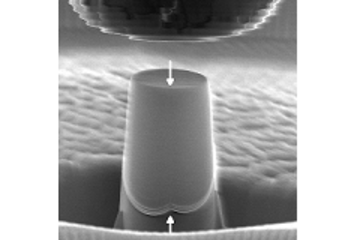All genres
1.
Journal Article
Assessing and ensuring parameter identifiability for a physically-based strain hardening model for twinning-induced plasticity. Mechanics of Materials 84, pp. 127 - 139 (2015)
2.
Journal Article
Revealing the strain-hardening behavior of twinning-induced plasticity steels: Theory, simulations, experiments. Acta Materialia 61 (2), pp. 494 - 510 (2013)
3.
Journal Article
Interdigitating biocalcite dendrites form a 3-D jigsaw structure in brachiopod shells. Acta Biomaterialia 7 (5), pp. 2237 - 2243 (2011)
4.
Journal Article
Towards ultrahigh resolution EBSD by low accelerating voltage. Materials Science and Technology 26 (6), pp. 640 - 645 (2010)
5.
Talk
Crystal Plasticity Implementation of an Advanced Constitutive Model Including Twinning for High Manganese Steels. MSE 2014
, Darmstadt, Germany (2014)
6.
Talk
Crystal Plasticity Implementation of an Advanced Constitutive Model Including Twinning for High Manganese Steels. 2nd International Conference High Manganese Steel, HMnS 2014
, Aachen, Germany (2014)
7.
Talk
A dislocation density-based constitutive model for TWIP steels. 1st International Conference on High Manganese Steels, Seoul, South Korea (2011)
8.
Talk
Currents state of the art in EBSD: Possibilities and limitations. Seminar Talk at Ludwig-Maximilians-Universität, München, Germany (2011)
9.
Talk
Modeling the hardening behavior of TWIP steels: A statistical dislocation density-based approach. MRS 2010 Fall Meeting, Boston, MA, USA (2010)
10.
Talk
Dislocation Density-Based Constitutive Model for TWIP Steel. Materials Science and Engineering MSE 2010, Darmstadt, Germany (2010)
11.
Talk
Modeling the hardening behavior of TWIP steels: A statistical dislocation density-based approach. Materials Science and Engineering, MSE 2010, Darmstadt, Germany (2010)
12.
Talk
Improving the physical resolution of electron backscatter diffraction by decreasing accelerating voltage. EBSD 2010 Meeting, Rolls-Royce Leisure Association, Derby, UK (2010)
13.
Talk
Modeling the hardening behavior of TWIP steels: A statistical dislocation density-based approach. Deutsche Gesellschaft für Materialkunde (DGM), Arbeitskreis (AK) Mikrostukturmechanik, RWTH Aachen, Germany (2010)
14.
Talk
Quantitative determination of twin volume fraction in TWIP steels by high resolution EBSD. Materials Science and Technology (MS&T) 2010, Pittsburgh, PA, USA (2009)
15.
Talk
Challenges of low-accelerating voltage electron backscatter diffraction. 3rd International Conference on Texture and Anisotropy of Polycrystals (ITAP-3), Göttingen, Germany (2009)
16.
Talk
Towards ultrahigh resolution EBSD by use of low accelerating voltage. EBSD-Workshop 2009, Chemnitz, Germany (2009)
17.
Talk
Towards ultrahigh resolution EBSD by use of low accelerating voltage. EBSD 2009 Meeting, University of Swansea, Wales, UK (2009)
18.
Thesis - PhD
A constitutive model of twin nucleation and deformation twinning in High-Manganese Austenitic TWIP steels. Dissertation, RWTH Aachen, Aachen, Germany (2013)











